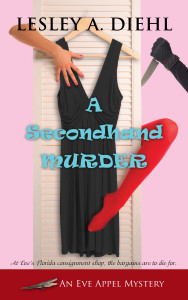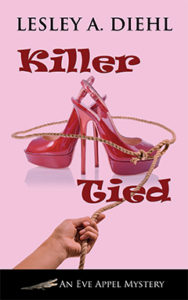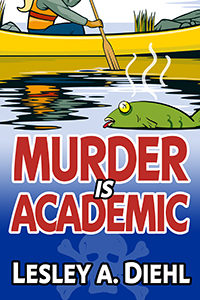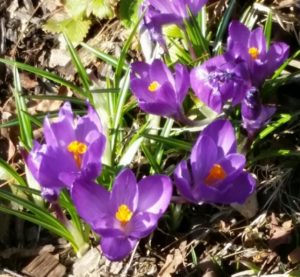Using juxtaposition in your work
Decades ago, in another century, I completed my doctorate with a research project on curiosity motivation in preschoolers. I was particularly interested in one theory of curiosity motivation that had been tested with animals, but not with humans. The theory postulated that curiosity was a function of several stimulus variables including novelty, complexity, change and juxtaposition. I was looking at novelty, not the other variables. I’d never run across the term “juxtaposition” before, but it was defined as stimulus contrast, pairing one stimulus with one in opposition to it. An example might be what I experienced when we returned to our home in Upstate New York a few days ago: beautiful signs of spring paired with sixteen inches of ice on a nearby lake (the white background in the picture on the right is the ice-covered lake). The two pictures side by side certainly do get one’s attention, and that’s what the theory stated, that juxtaposition is a stimulus aspect that provokes our curiosity or attention.
I won’t go into any more detail about my research—I’m sure some of you are wondering why you’re reading a blog about research—but I think juxtaposition can be used to create an eye-catching book cover. The first Eve Appel cover A Secondhand Murder is a good example: a dressing room in a shop with a model’s leg peeking out from behind the door paired with a knife. 
My most recent Eve Apple cover uses the same color scheme but shows a pair of stiletto heels along with a lasso.
Or how about a canoer enjoying a summer paddle on a lake with a sick fish below the surface of the water?
All these scenes use juxtaposition to draw our visual attention, and that’s what we want in a cover.
The same is true of the contents of the books. Juxtaposition or contrast in characters also merits continued attention. It probably works because the contrast provokes some degree of tension, an attempt to figure out how these two initially disparate characters belong together, i.e., what do they have in common? Humans like to make things fit and struggle to understand what we initially can’t comprehend.
In the Eve Apple mysteries, Eve is a tall, skinny, outspoken woman with punked blonde hair while her best friend is tiny, has curly red hair, is soft-spoken, a true southern lady. These women are best friends, a friendship begun when they were in grade school. With their contrasting personalities and styles of dealing with others, they learn from each other so that over the years they grow to take on some of the other’s traits. Eve becomes more social adept at handling people, Madeleine more able to stand up for herself. Their different attitudes and behaviors continue to mark them as very different people and make for interesting and funny scenes as they take on murder inf rural Florida. Making this friendship work takes time, time for the writer to develop the underlying psychology of how two different people find common ground. Not only does juxtaposition draw the reader’s attention but resolving the tension it generates gives depth to the characters.
A writer can use juxtaposition to separate characters who seemed to be a good match. While Eve Appel and her PI boyfriend Alex care for each other, they have such different approaches to what constitutes a relationship that those differences eventually separate them. Eve finds Sammy, a half-Miccosukee Indian with whom she appears to have nothing in common. Their initial interactions are fraught with conflict, but Eve comes to understand that Sammy “gets” her in ways Alex never did. Juxtaposition unresolved can be used successfully to end a relationship.
Do you use juxtaposition to create your covers and in your writing?

